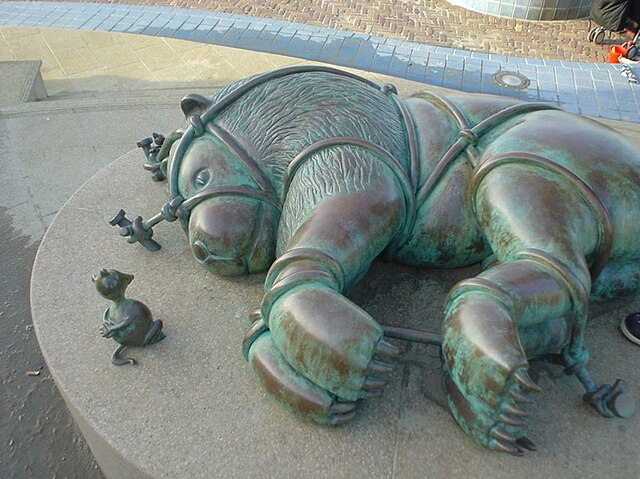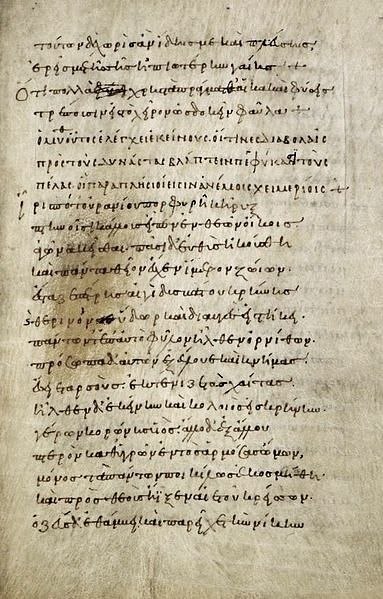The Lion and the Mouse is one of Aesop's Fables, numbered 150 in the Perry Index. There are also Eastern variants of the story, all of which demonstrate mutual dependence regardless of size or status. In the Renaissance the fable was provided with a sequel condemning social ambition.
Woodcut showing two scenes from the fable in the Ysopu hystoriado, Seville 1521
Sculpture by Tom Otterness at the Beelden aan Zee museum
Lithograph in black pencil on cream-coloured background by John Doyle (artist), 1844
Aesop's Fables, or the Aesopica, is a collection of fables credited to Aesop, a slave and storyteller who lived in ancient Greece between 620 and 564 BCE. Of varied and unclear origins, the stories associated with his name have descended to modern times through a number of sources and continue to be reinterpreted in different verbal registers and in popular as well as artistic media.
A detail of the 13th-century Fontana Maggiore in Perugia, Italy, with the fables of The Wolf and the Crane and The Wolf and the Lamb
A Greek manuscript of the fables of Babrius
12th-century pillar, cloister of the Collegiate church of Saint Ursus, Aosta: the Fox and the Stork
The Nepalese Iisapan Daekaatagu Bakhan







